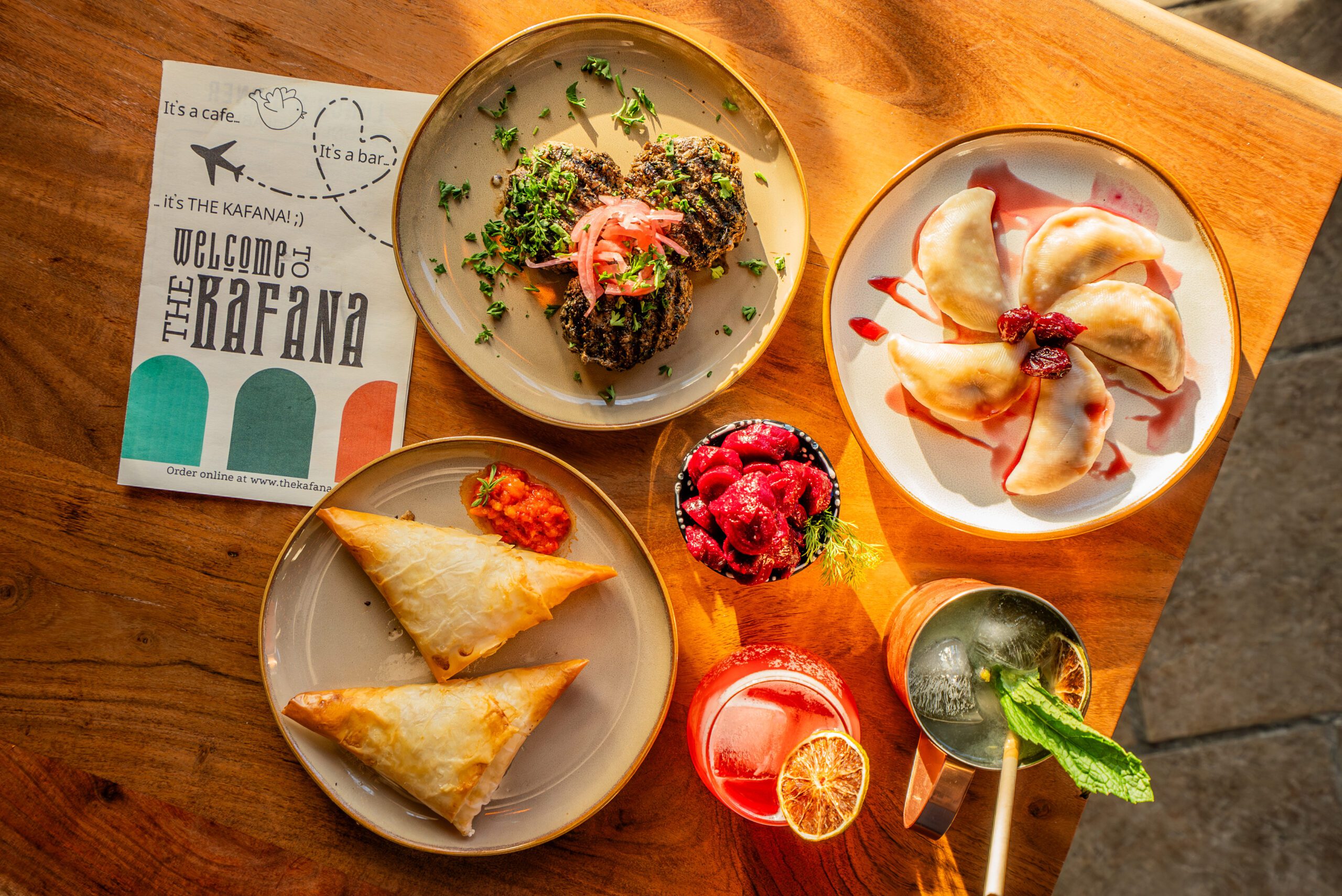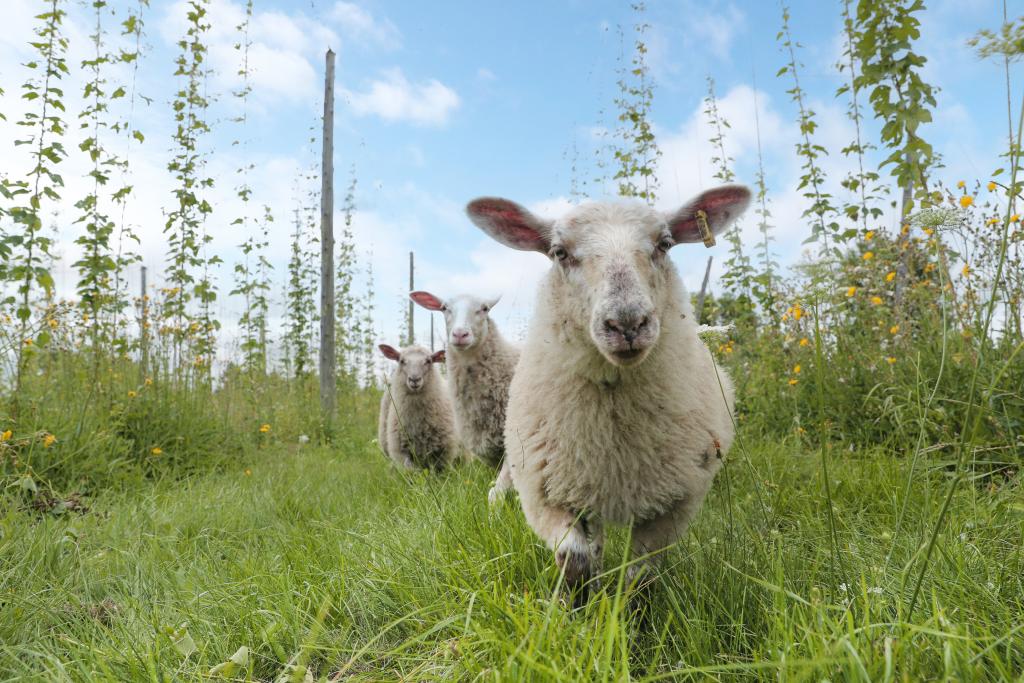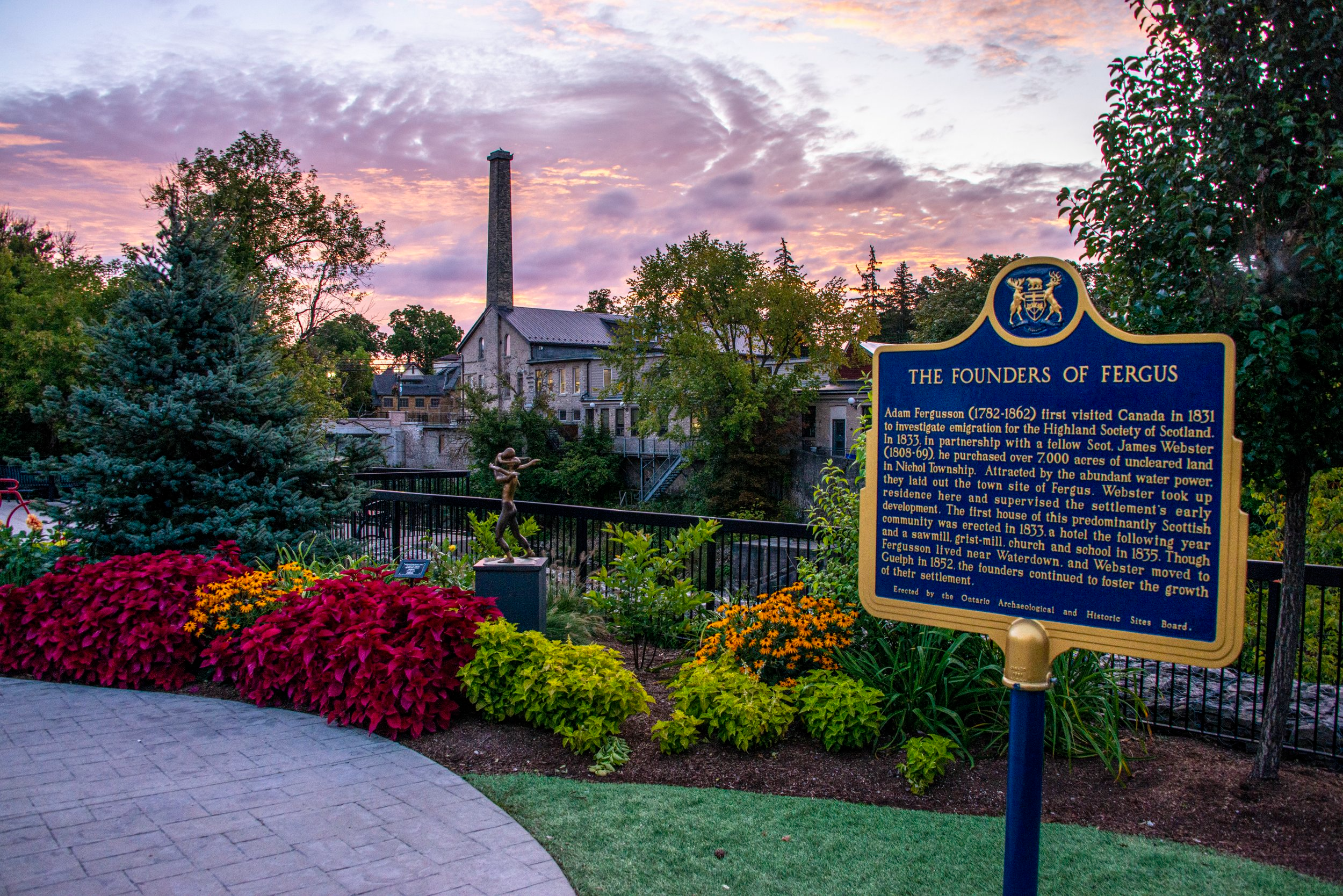In Dec. 2019, Ryan Crawford had an idea: During the slower winter months, when the tourists and the snowbirds weren’t filling seats at Backhouse, the farm-to-table restaurant he co-owned in Niagara Lake, he’d open an Italian-style pop up, two nights a week.
“I wanted to go back to my roots, give something back to the community,” he remembers, recalling his slow-dawning dilemma with the rarefied “seven or eight-course tasting menu” type food his restaurant was serving. “It wasn’t that it was pretentious, but it was unaffordable. I missed cooking for my friends. They came in once or twice a year for a special meal, but I wanted them to come in once a week, sit at my bar and have a glass of wine with me.”
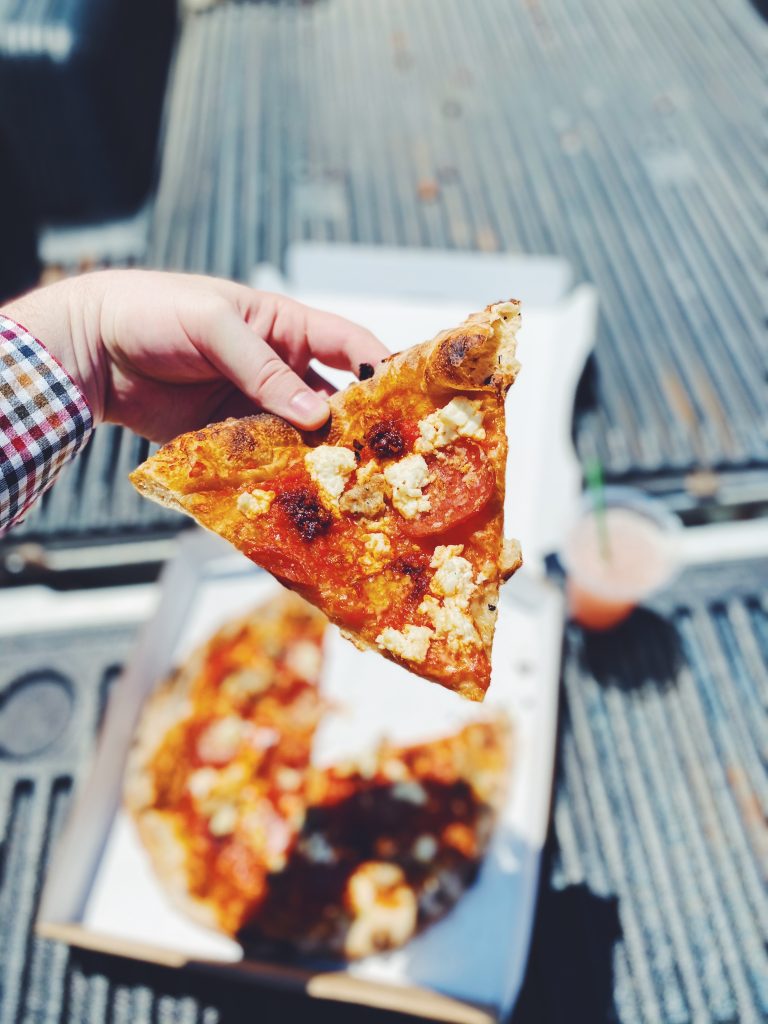
And so, in a flurry of red-checked tablecloths and basket Chianti wine bottles, Ruffino’s was born. Named after Crawford’s dog, a Spinone Italiano, its laid back, convivial atmosphere and authentic Italian food (including a nduja and mushroom sourdough pizza called The Beatrice, named after Ruffino the dog’s “younger sister”) were an instant hit with the locals, and, according to Crawford, they were on track for their best winter ever.
And then along came COVID-19. The restaurant closed for a day, re-grouped, and began doing takeout as Ruffino’s, since Backhouse’s fare just wouldn’t translate in that context. Business was good, but when patios were allowed to re-open, the economics of it—six tables seating a max of 4 compared to the 75 people they usually seated inside, but still with the same overhead—were untenable.
“We were like, ‘What are we going to do?’”
Cue another bolt of inspiration. “It was the middle of the night, and I couldn’t sleep, and suddenly I had this thought,” recalls Crawford, who earlier that day had seen Marc Lepine, chef at Ottawa’s L’Atelier, post about a drive-through tasting menu. “We’re going to do a car hop! We’re going to elevate the drive-in.”
Immediately, he took to the internet, finding the original maker of those old-school carhop trays and ordering 35, along with bamboo plates and compostable cutlery. It took a little while for the idea to gain traction, but soon all 13 spaces in the Ruffino’s parking lot were full, the 1980s strip mall transformed into a little slice of Italy—and something like normality—as friends and families gathered to eat chicken parmigiana and spaghetti and meatballs made with ingredients fresh from the restaurant’s nearby farm. A curated playlist (heavy on the Dean Martin and Louis Prima) could be downloaded via a QR code on the digital menu, and, if they timed it right, diners could eat facing the setting sun.
“People loved it,” says Crawford, adding that several people have brought their antique cars out to complete the experience. “I remember going to a drive-in when I was a kid, and for my generation, I think this our way of sharing that experience with our children too.”
Ruffino’s is just one of many businesses that transformed their eateries into drive-in restaurants and, along the way, revived and reimagined a dining concept many of us associate with roller-skated wait staff serving up greasy grub in a long-faded memory.
For Graffiti Market, located in Kitchener, Ont., their drive-in experience was a happy accident. Like several other restaurants, they pivoted to takeout during the pandemic, designing a patio pick-up system for guests to grab food they’d pre-ordered online. But what had been an efficiency-driven process, a contactless way to get their signature deep dish Detroit-style pizzas and beer from the onsite brewery into the hands of their customers, turned into a much-needed source of human connection.
“The quick interactions with guests as they come to pick up their orders has been a highlight all summer long,” says Joshcka Sawatzky, marketing director at the Ignite Group, which owns Graffiti Market. “It’s been amazing to hear all the words of encouragement and support from our neighbours and local patrons.”
As the months went on, they began to take advantage of their large parking lot and proximity to the scenic Ironhorse Walking Trail, adding a food truck and “walk-up beer shop” next to their patio bar. It quickly became a popular place for social-distanced socializing. “People even started to bring chairs and tables to tailgate while they enjoyed their food,” says Swatzky. “It certainly wasn’t encouraged, but some may have even enjoyed a cold beer in the sun.”
And while she’s proud of the safe, professional way the restaurant has made this all work business-wise, Sawatzky says the community impact has been especially meaningful. “Knowing that we’ve helped some people to experience a hint of ‘normalcy’ and summer fun in the midst of this pandemic has been extremely fulfilling for us,” she says.
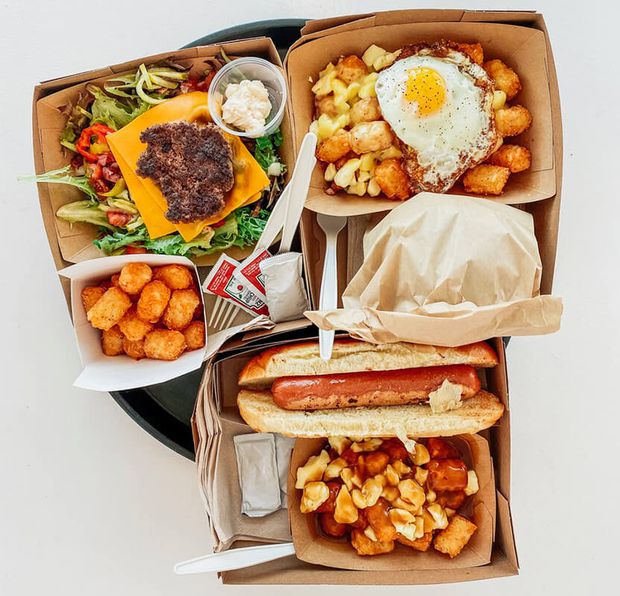
Across the province in Prince Edward County, the parking lot at The Vic has also found new purpose as a community gathering place. “Takeout was lonely!” laughs Sonya Szabo, who owns the spot in picturesque Picton. “I didn’t go into business for that. I want to get to know my customers, and with take-out it was so transactional.”
The transition to a nostalgia-inspired venue wasn’t a huge leap for The Vic, which already had painted window signs saying things like, “Good food, good mood” and a frequently Instagrammed rainbow mural. Sticking “old school,” Szabo’s team simply placed giant menus in front of their existing spaces, with the instructions for patrons to flick their hazards when they were ready to order. The menu is a “healthy-minded” take on drive-in classics—burgers, shakes, hotdogs—with options for vegans and vegetarians. The biggest draw is the breakfast poutine, which swaps out gravy for hollandaise and fries for their signature tater tots, all doused liberally in an addictive spice mix they call “magic dust.” (Breakfast is, unsurprisingly, their busiest time.)
Ruffino’s, Graffiti Market and The Vic—each a Feast On Certified restaurant—all say they’ll continue offering drive-in service into the fall, but will shut things down in the winter. It’s hard to know if this trend will continue in the future, but even if turns out this was just a quirk of COVID, drive-in dining gave families and friends a chance to connect with one another during a time when that felt impossible.
The moment Szabo will probably remember most from The Vic’s first summer as a drive-in happened early on. Two cars pulled in simultaneously, backing into parking spots right next to each other. “We thought that was weird, but we quickly realized that it was grandparents in one car, and their children and grandchildren in another,” says Szabo. “They’d decided they’d celebrate a birthday at the Vic.” The family put their tailgates down and ate “together,” albeit six feet apart, possibly for the first time in a long time.
“It was just so sweet. I realized that this was why we were doing this.”
CONTENT FROM GLOBE CONTENT STUDIO
ORIGINALLY PUBLISHED OCTOBER 15, 2020
as part of the Great Taste of Ontario Special Report
